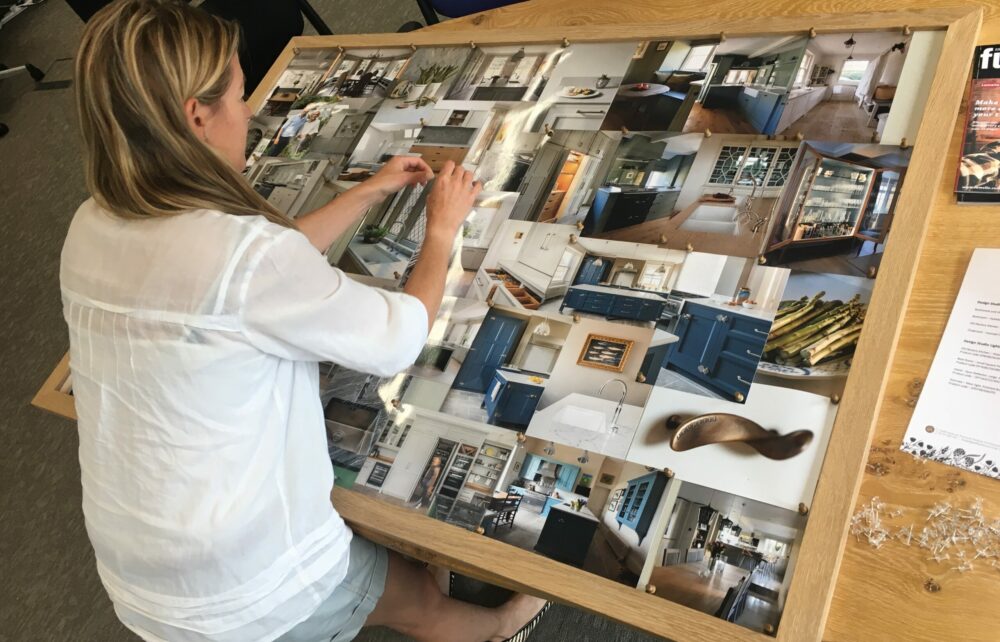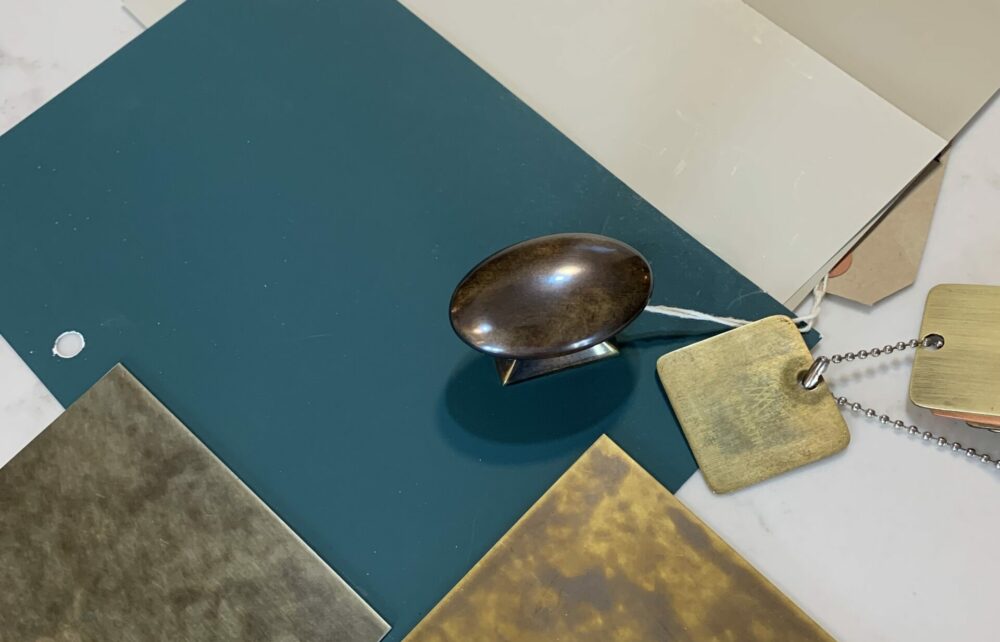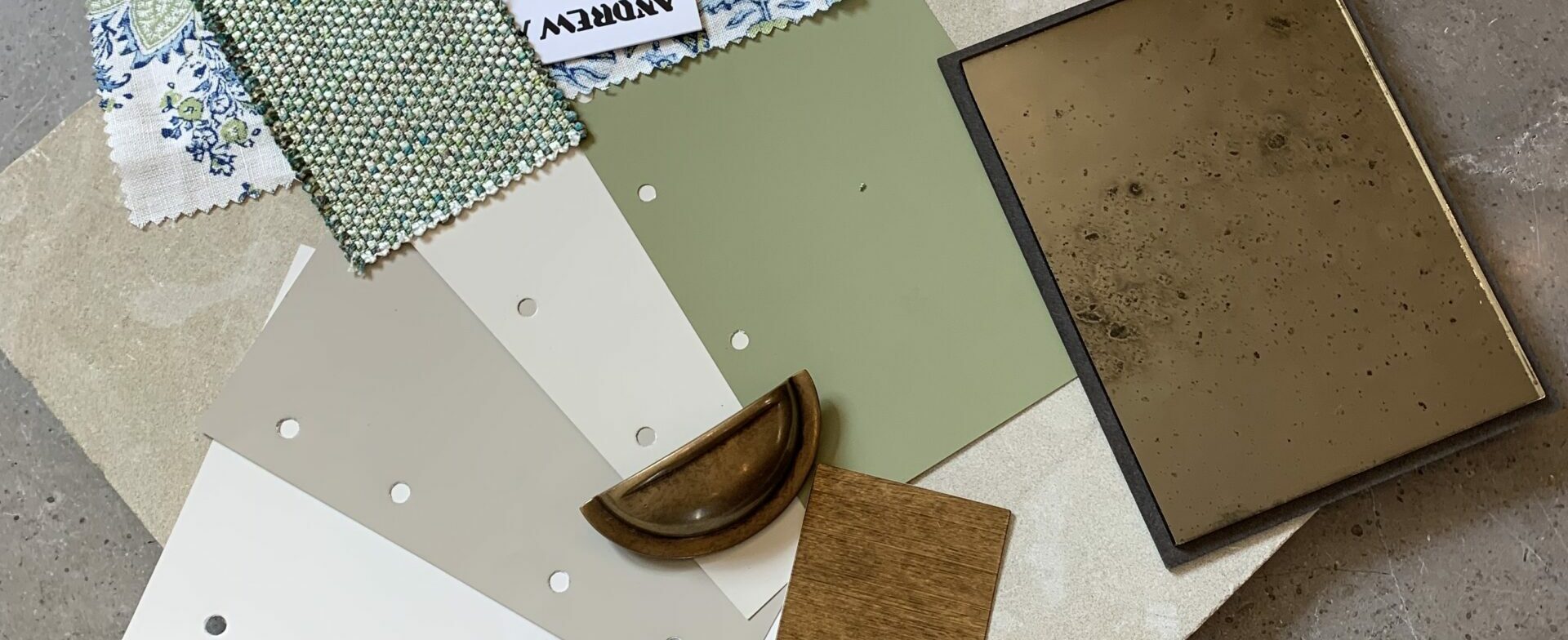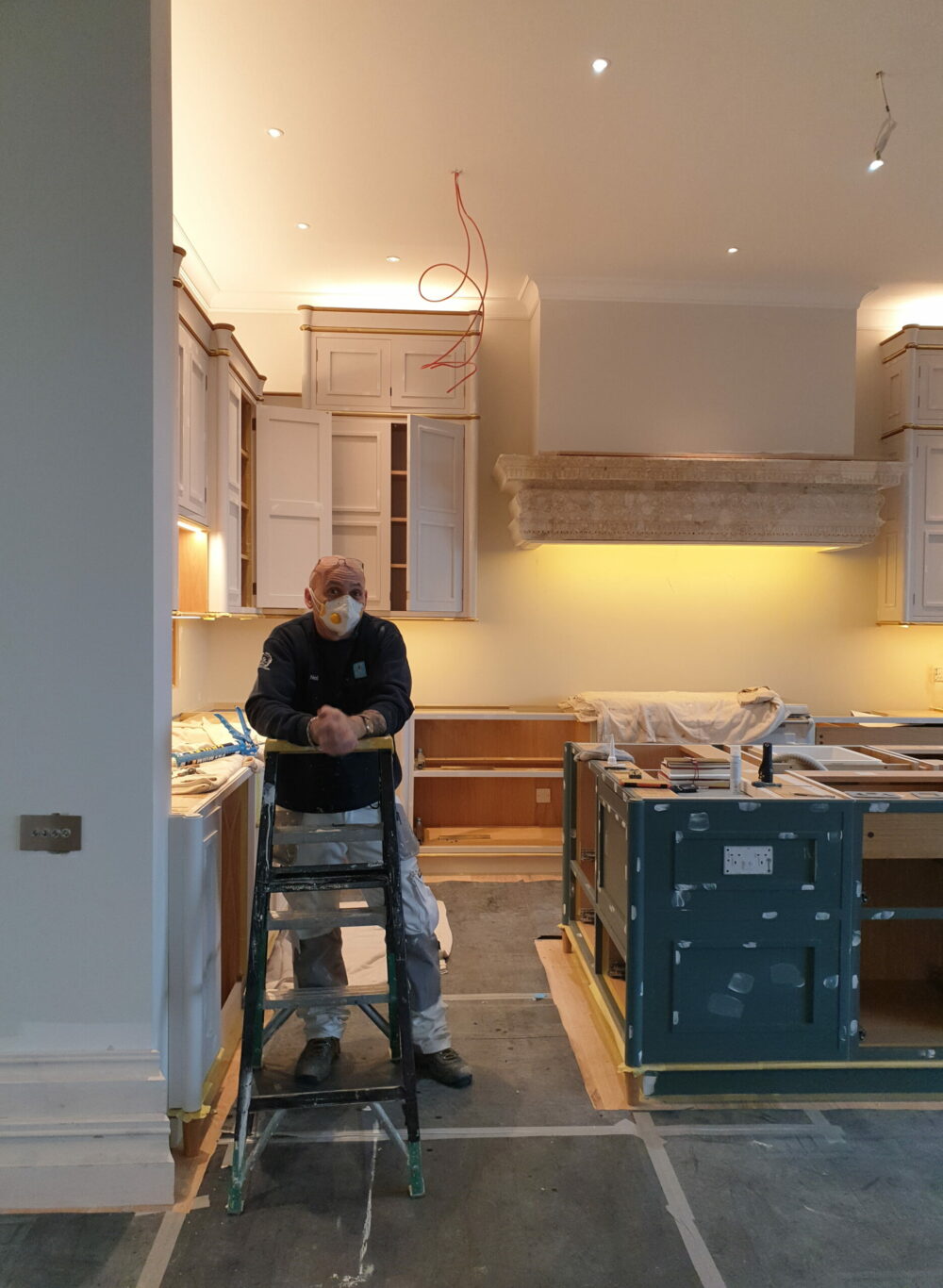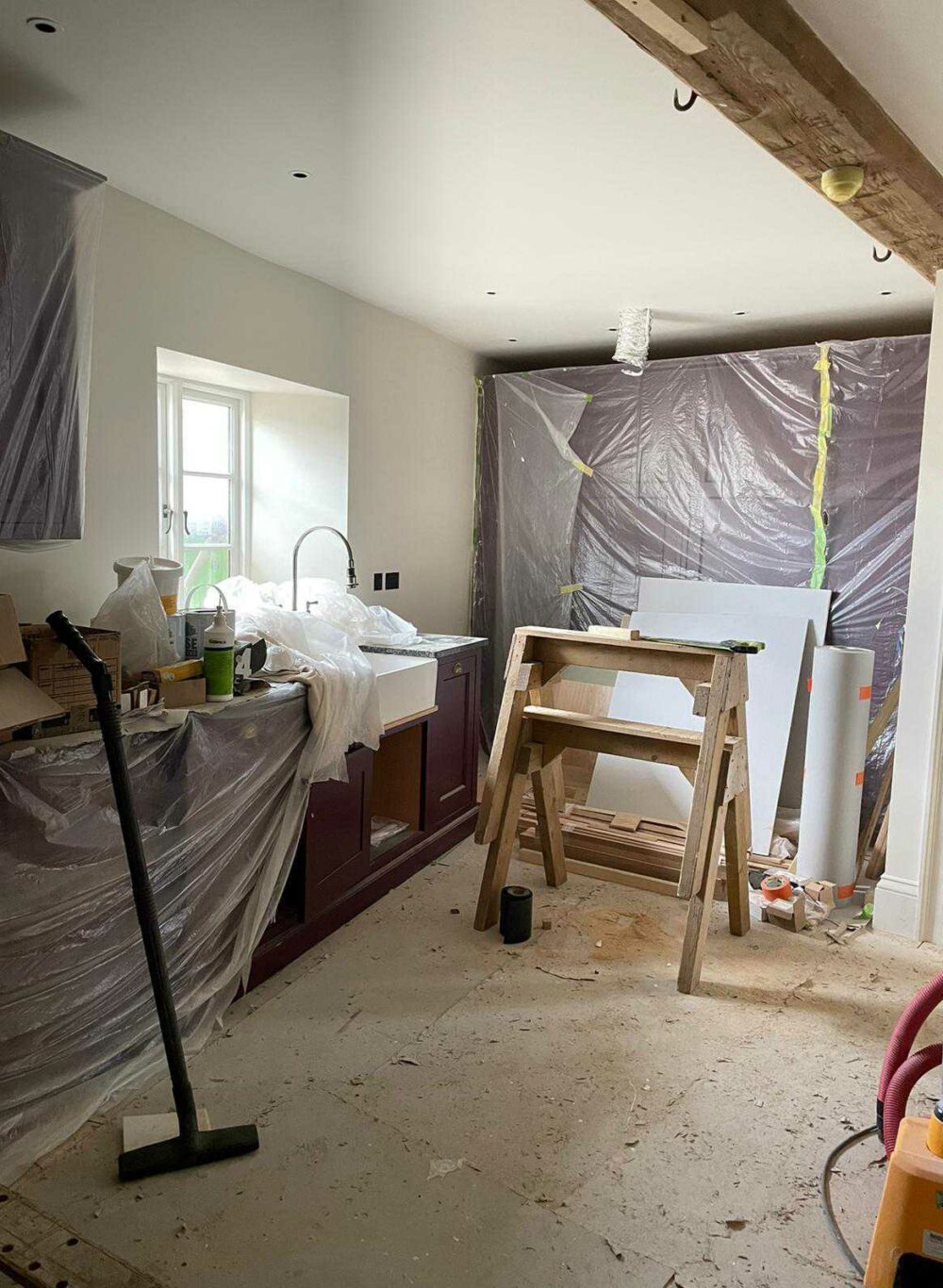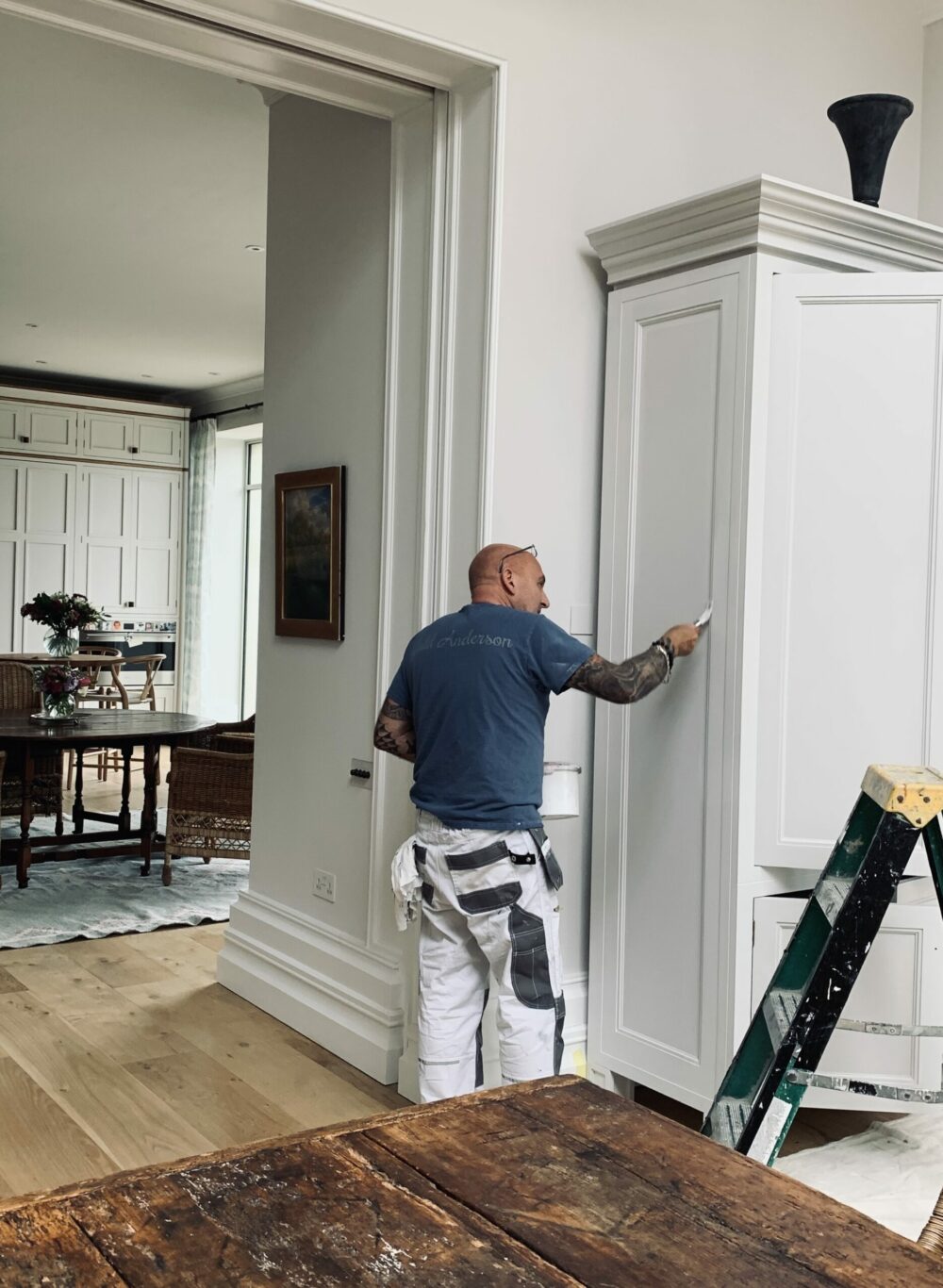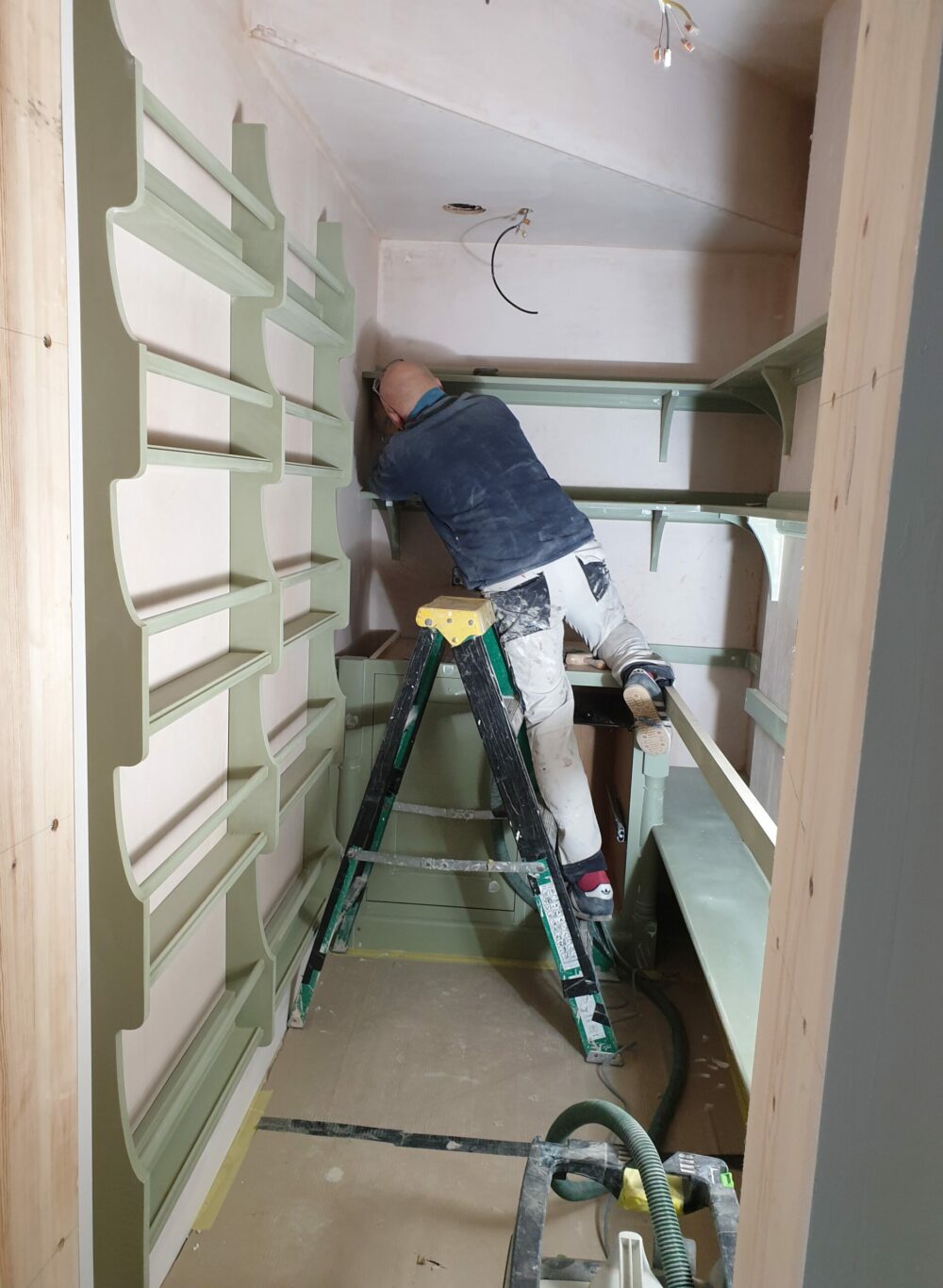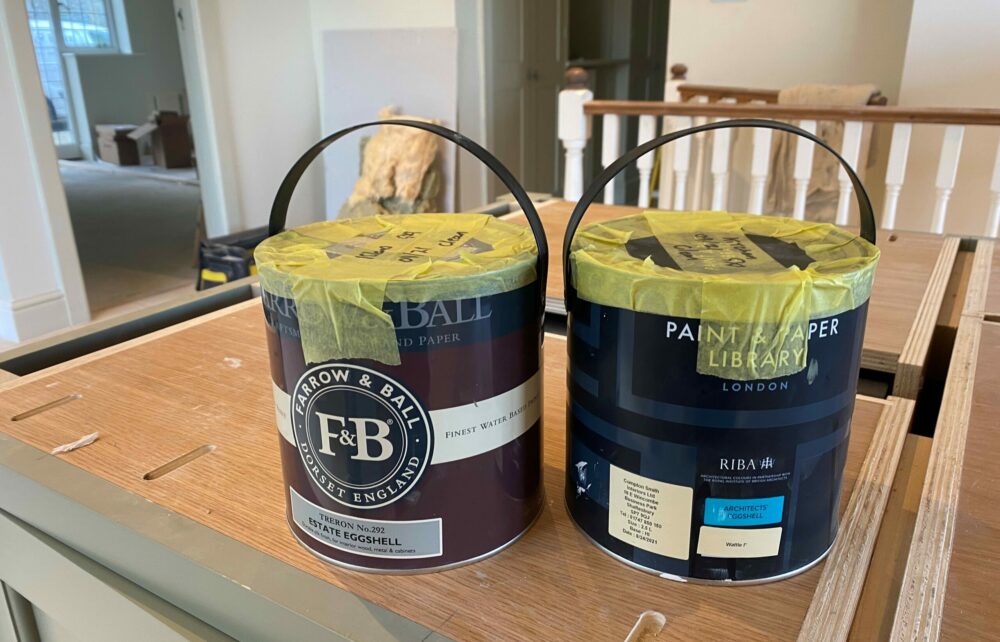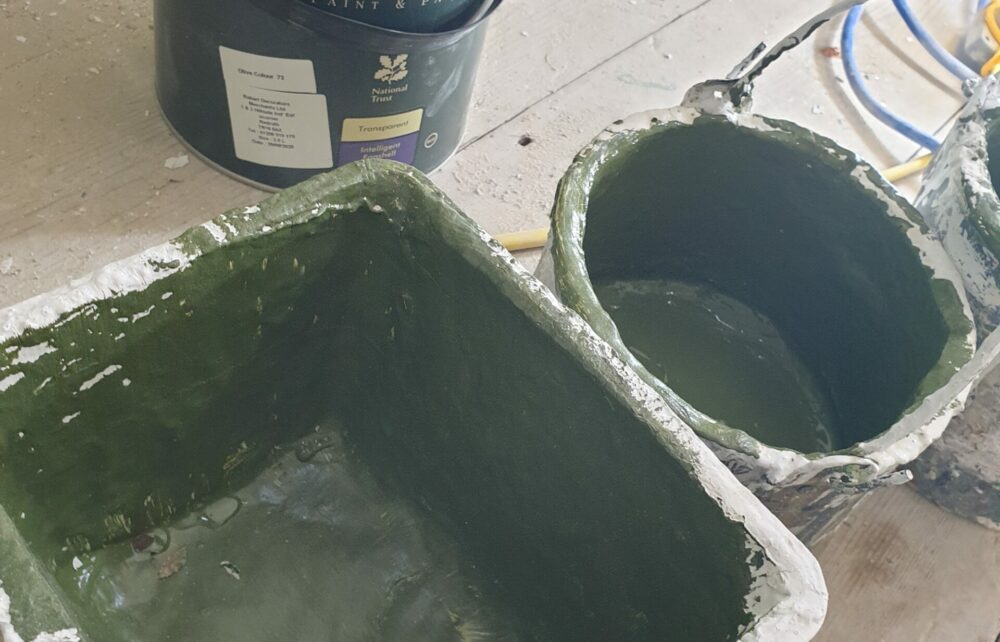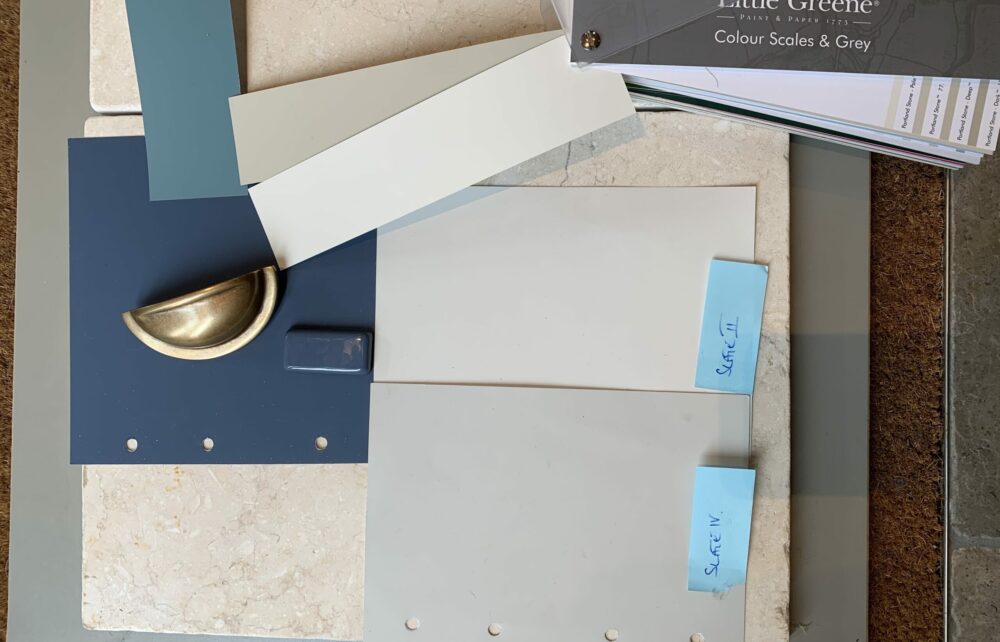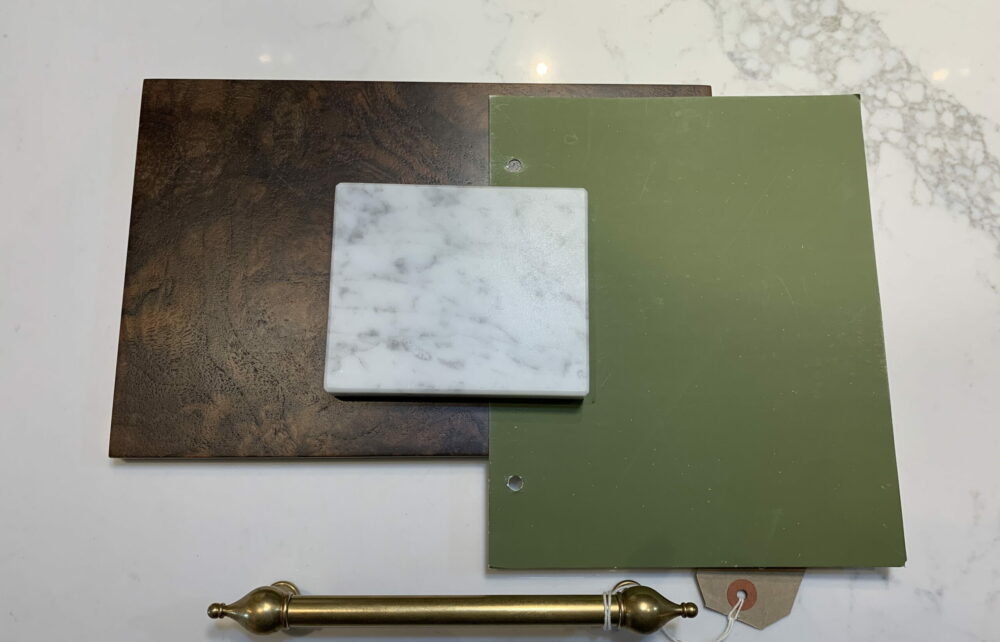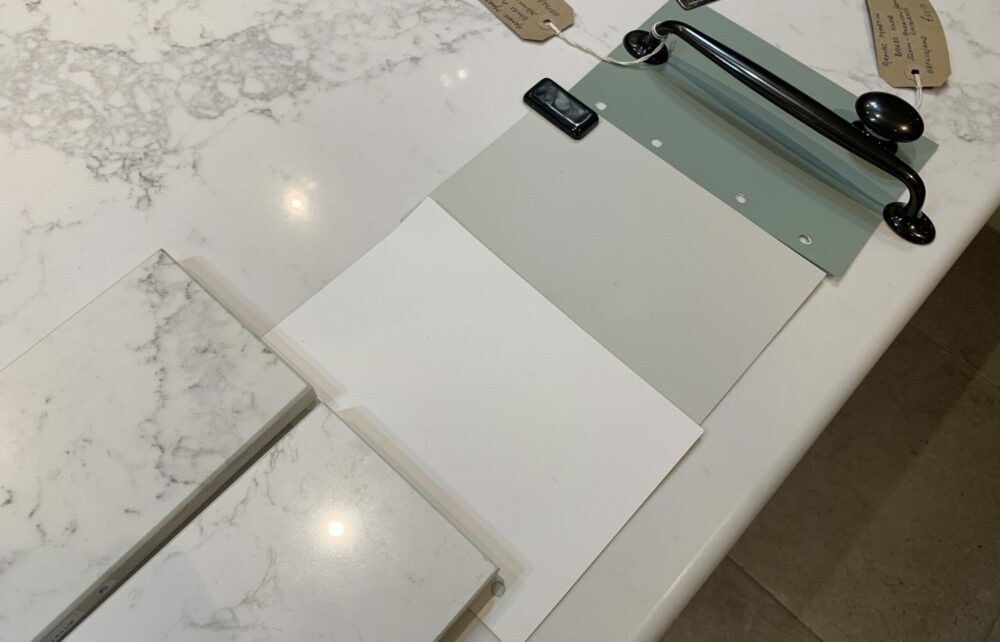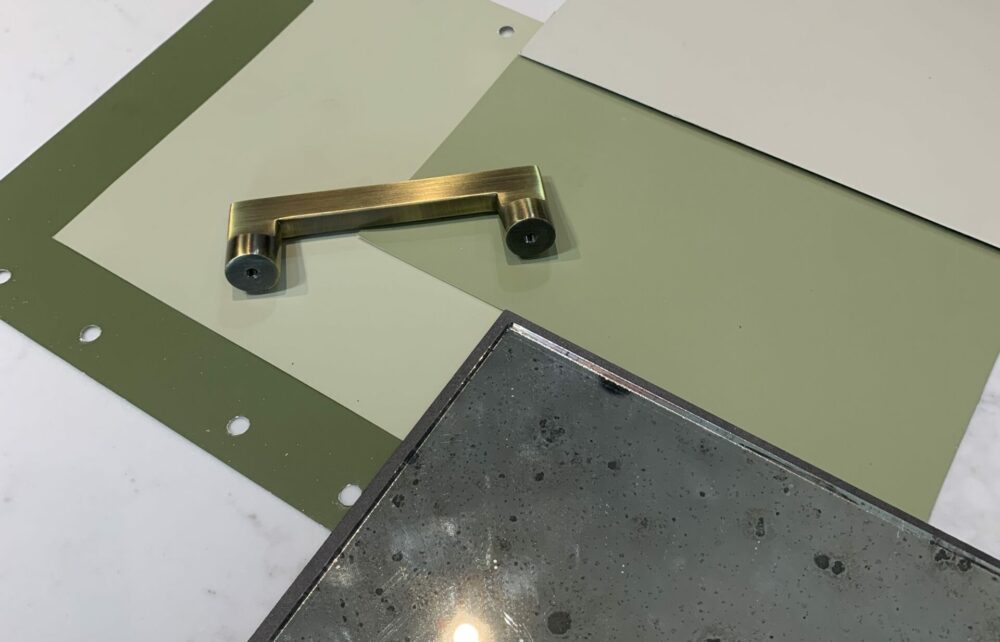Journal
A truly hand-painted kitchen requires experience, skill, meticulous care, and incredible attention to detail in the preparation process. Colour range, finish and environmental credentials all contribute to Guild Anderson’s choice of preferred paint manufacturers.
When we think of British paint many of us have memories of a series of television adverts dating from the 1960s showing English sheepdogs; possibly the only adverts we have ever seen for a British paint brand. 60 years later there are now many British brands to choose from; all offering a stunning range of colours, finishes and some with strong eco credentials.
Most well-known British brands have made dramatic changes and advances in reducing the toxicity of their paints making them free from solvents or VOCs (volatile organic compounds). Acrylic or vinyl resin based paints are made from crude oil and are not eco-friendly. Look for paints that contain pigments to colour them, not chemicals.
Some less expensive paints on offer are thin and give poor coverage. Guild Anderson recognise that the quality, colour choice, and coverage of the paint that we use has to match the quality of the cabinetry that we produce.
Whether you choose a more traditional or modern cabinet design, choosing the colour is the fun bit, but which finish can be a much more daunting task; do you opt for matt, satin or gloss? Selecting the finish is one of the most important choices you make, as the finish can have almost as big an effect on your overall kitchen aesthetic as the colour.
Guild Anderson offer a Colour Consultancy Service where Hannah Anderson guides clients through the complex and often emotional process of choosing the perfect paint colour and finish for your cabinets. Along with this colour consultation you will be able to decide on the worktops, hardware, splash backs and flooring.
https://www.guildandersonfurniture.co.uk/colour-consultancy-service/
Hannah advises that “the paint you choose will contribute to the entire atmosphere in your kitchen, and so it’s important to find the one that suits your theme and your general layout. Maybe a fabric swatch is your starting point, or the colours in a favourite artwork? Maybe you already have a strong sense of the colour you want to use.”
Guild Anderson’s experienced painter Neil offers invaluable advice on how to achieve the perfect finish. The key is meticulous preparation, care and attention to detail, its certainly not about watching paint dry!
Neil starts with photographing the area, checking for damage. He then protects the floor, following this with protecting the worktops. All the drawers are then removed, marking each one to ensure anyone on site is aware where they need to returned. These will be painted separately away from the main kitchen area.
All surfaces are then rubbed down using 240 grade paper, then vacuumed using a soft round brush attachment, followed by wiping down with tack rags.
Sparingly he then uses caulk, followed by filling any minor dents or cracks. At this point Neil uses an inspection lamp to shine across the surface from different angles to show up the imperfections which are then filled again. All areas are left to dry overnight or until the caulk is dry, and he follows this with another sanding using 320 grade paper, vacuuming again and another wipe down. All this before a brush touches paint!
Finally Neil is ready to paint, and when it comes to paint, even with a new tin, it is strained. A small amount is poured in to a paint kettle and brushes are dampened before use. The paint is then thinned with water which will allow the paint to flow, but won’t be so thin it becomes weak. Neil advises; “You will know if it is too thick as it will feel like it is “pulling”. If you add small amounts of water you will instinctively know when it feels right”. Truly, it’s all about “feel”.
Every edge is painted first, and it may help to dampen down large areas by wiping a clean, damp sponge over the area prior to painting. Neil suggests to not overlap paint as it can show a different level of sheen, once dry. A technique of laying off; left to right, bottom to top, right to left, top to bottom, getting progressively lighter with each pass. He applies two coats of the top coat as a rule; if it is a dark colour, it may take 3 or 4 coats.
“While applying the first coat of finish you will, guaranteed, spot bits of filling you missed first time, get a small piece of masking tape and stick it on the imperfection. Once you have done the first coat, go round and second fill where the bits of tape are” – Neil’s insider tip!
Each coat is left to dry and between each coat a light rub by hand with 400 grade paper.
Any paint that is left at the end of each day is put into a scrap pot, not back into the stock pot, this is always kept clean and fresh. Once finished it is checked it over, and checked again.
When it comes to drying times, every paint is different depending on its ingredients. Most water based paints are touch dry in a couple of hours, and further coats can be applied after four hours. However it will take at least 2-3 days before you can place anything on a painted surface, and up to 28 days before the surface is fully cured.
So, once dry the masking tape is removed and ideally the walls are given a final coat. All furniture is replaced, cleaned, dusted, wiped and polished, so the client is free to place their belongings straight into the cupboards.
Such precise skill, care and attention are the finishing touches to a Guild Anderson kitchen. It is the final part of the process of creating truly bespoke cabinetry.
Little Greene
Little Greene is an independent family run British Paint Manufacturer founded in 1996, with their factory in North Wales. They are committed to the socially and environmentally responsible production of high-quality paints and wallpapers.
Their paints and wallpapers represent 300 years of decorative history. Referencing the key periods of interior design, from the 17th century to the late 20th century. They are committed to an ongoing research programme, and are proud to breathe new life into the best colours and patterns from the past.
Their ranges includes interior and exterior finishes, oil-based paints, floor paints and a signature range of hard- wearing, water-based ‘Intelligent Paints’, especially designed for today’s busy homes.
Their environmentally-friendly paints and wallpapers are amongst the highest quality available. Insisting on using the finest natural, organic and safe synthetic pigments, giving superb depth of colour, high covering power and the long life expected from modern paints.
Paint & Paper Library
Paint & Paper Library was founded over twenty years ago in London by interior designer David Oliver. Set up to provide inspiration, colour expertise and design ideas for interior decorators, architects and specifiers worldwide.
They now offer a distinguished palette of 180 unique colours. Their paint is manufactured in the UK and has been officially accredited by RIBA, the Royal Institute of British Architects. They are credited with creating an unrivalled balance of colour, mood and light in contemporary interiors.
Available in five finishes for both interior and exterior use, they have formulated their paints to the highest possible standard.
Farrow & Ball
In 1946 Dorset based John Farrow and Richard Ball met at a local clay pit and together shared a passion for making rich colours to original formulations using the finest ingredients.
Farrow was a trained chemist who worked for Ireland’s Agnew Paints during the Second World War, while Ball was an engineer who survived capture as a prisoner of war.
The first factory was built in Verwood and they went on to supply paint for the Ford Motor Company, Raleigh Bicycles, the Admiralty and the War Office.
Towards the end of the 1960’s Farrow & Ball sold their business to Norman Chappell, but soon after a devastating fire destroyed much of their factory. So, Farrow & Ball moved to its current home near Wimborne.
During the 1970s and 80s many paint manufacturers began creating acrylic paints with fewer pigments and with added plastics, but Farrow an Ball stuck to their age-old methods.
In the 1990’s Tom Helme and corporate financier, Martin Ephson took on the company.
They began to really grow the business, with a focus on restoring heritage properties with colours that were sympathetic to their era.
In 2010 they made a bold decision to move their entire range of oil based paints to eco-friendly water based finishes with low VOC (volatile organic compounds); making sure that their paint and paper is as kind as possible to the environment.
Farrow & Ball’s Estate Eggshell is tough but gives a beautiful stain finish. It is both washable and wipeable making it a practical choice in a kitchen. Plus you can now choose from over 132 colours.
Mylands
Mylands began in 1884 when ‘Honest’ John Myland set up his modest shop in the heart of Lambeth. They are Britain’s oldest family-owned and run paint and polishes manufacturer, still located in Lambeth, and are the last remaining paint manufacturer in London. John’s great-grandson Dominic Myland carries on the family tradition of perfection in paint.
Originally supplying to trade only, Mylands has been a best kept secret amongst interior design professionals and scenic artists for over 130 years. Their long standing association with the film, television and theatre industry has seen their paints featured in some of the world’s most successful productions.
In 1985, Mylands was awarded a coveted Royal Warrant, and today, Mylands’ paints are available direct to the customer in a comprehensive range of interior and exterior paint finishes.
Mylands colourists take great pride in their craft; creating timeless colours that have sumptuous rich depth and paint formulations that are thick, lustrous and easy to use. They offer over 160 colours in a comprehensive range of interior and exterior finishes.
Renowned for its outstanding coverage and opacity, Mylands paint is exceptionally hardwearing and beautiful to look at, leaving a lasting impression wherever it’s used. Guild Anderson’s painter Neil is quoted as saying that “Mylands paint is a joy to use!”


